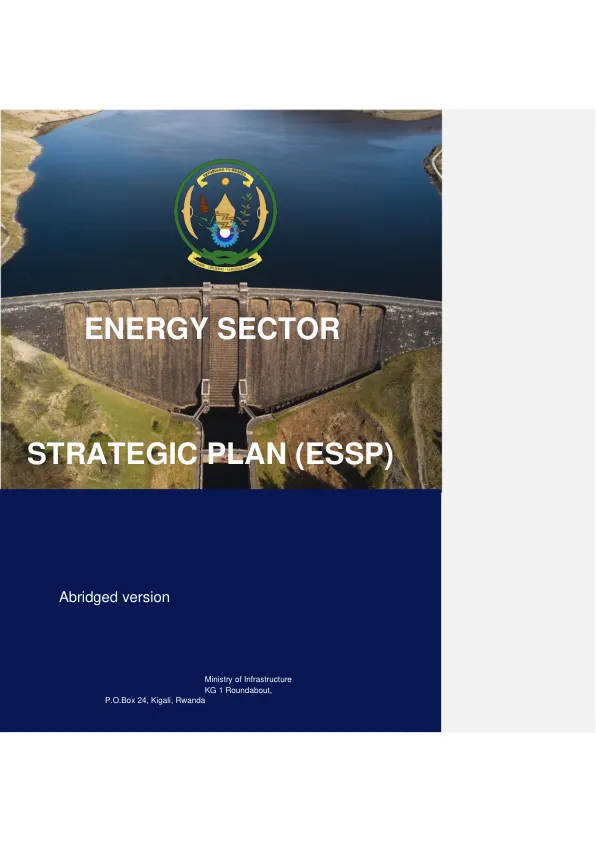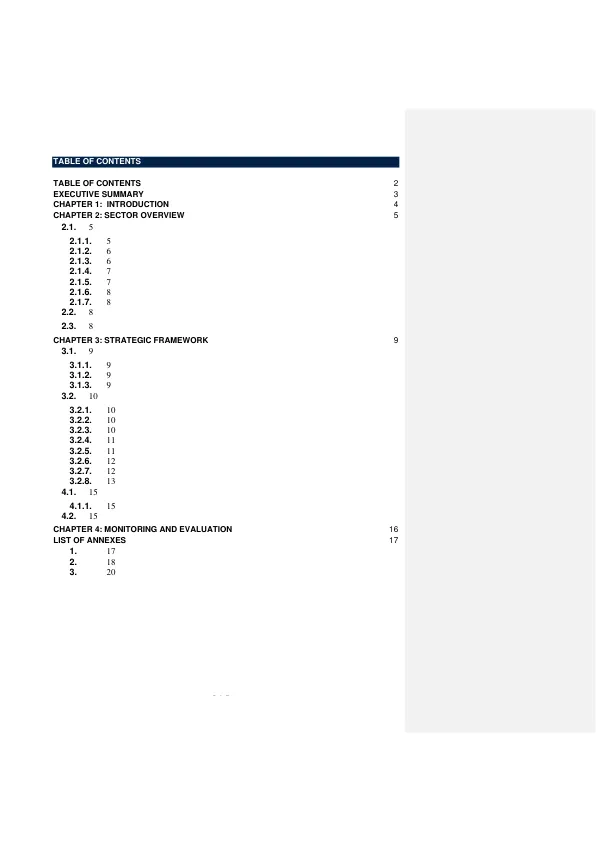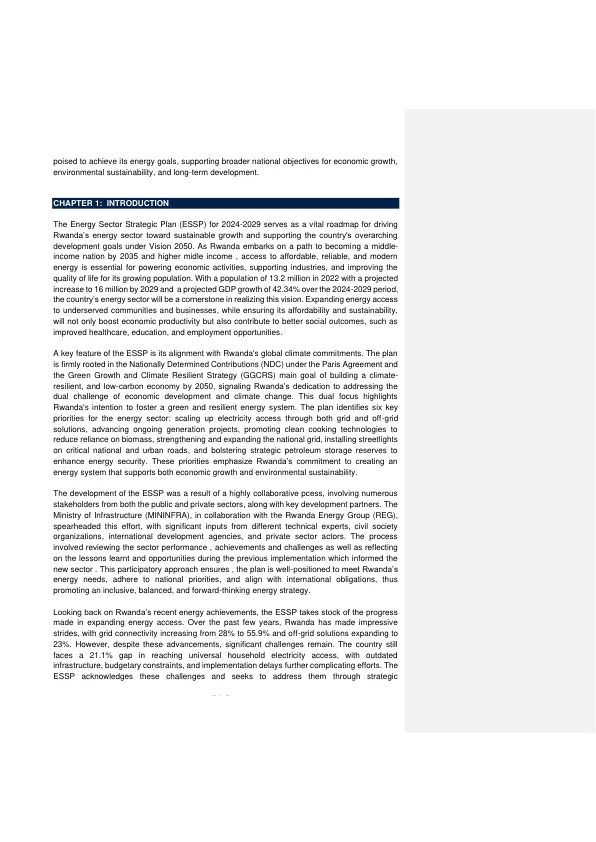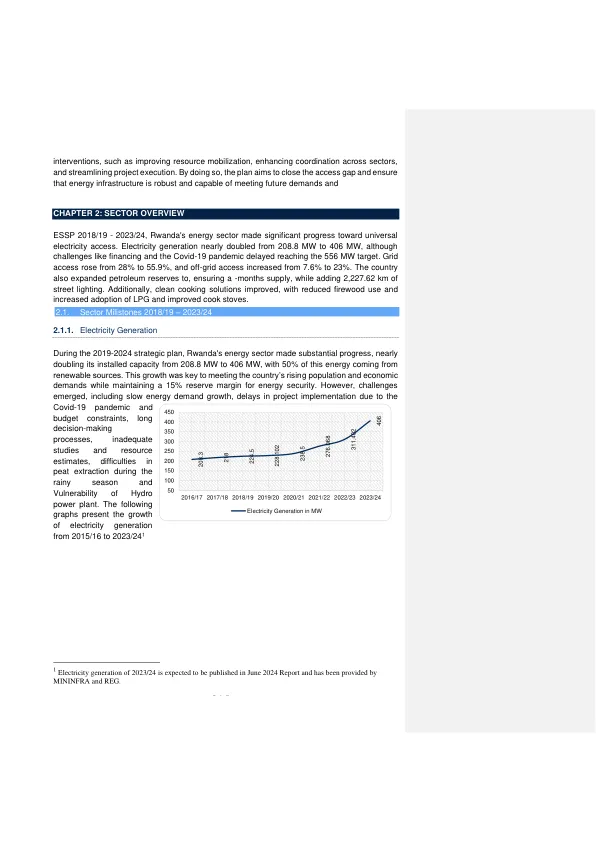The Energy Sector Strategic Plan (ESSP) 2024–2029 serves as a vital framework for steering Rwanda's energy sector towards sustainable growth and aligning with the country's broader goals under Vision 2050 and the upcoming National Strategy for Transformation (NST-2). The plan, developed under the leadership of the Ministry of Infrastructure (MININFRA), in collaboration with various stakeholders, seeks to address current sectoral challenges while maximizing opportunities to promote long-term energy security and economic development. Over the next five years, the ESSP aims to tackle critical issues, including limited electricity access, inefficient energy infrastructure, and reliance on traditional cooking methods, while laying the foundation for Rwanda's energy future. Aligned with Rwanda's international commitments under the Nationally Determined Contributions (NDC) and the Green Growth and Climate Resilient Strategy (GGCRS), the ESSP identifies six strategic priorities for 2024-2029. These include scaling up both grid and off-grid electricity access, advancing electricity generation projects, promoting clean cooking technologies, expanding the national grid, and increasing street lighting along major roads. These priorities are integral to Rwanda's goal of fostering sustainable economic growth and transitioning towards cleaner, more reliable energy systems as envisioned in Vision 2050. Despite significant progress, including doubling the country's electricity generation capacity from 208.8 MW to 406 MW, the ESSP acknowledges that Rwanda has faced challenges in meeting its energy targets. The goal of 556 MW of electricity generation was missed due to project delays, low demand, and external disruptions such as the COVID-19 pandemic. In addition, the universal household electricity access goal remains unmet, with 21.1% of households still lacking access to reliable energy. Limited budget allocations, outdated infrastructure, and logistical constraints have also delayed essential projects like, off-grid electrification, and the expansion of petroleum storage facilities. Looking forward, the ESSP sets ambitious targets to be achieved by 2029. On-grid electricity access is projected to rise from 5.9% to 75%, while off-grid access is expected to be maintained between 23% and 25%, ensuring 100% access for productive users by 2027/28. Rwanda's electricity generation capacity is projected to grow to 615 MW, with at least 60% of the energy mix coming from renewable sources. Major projects, such as the 43.5 MW Nyabarongo II hydropower plant, imports 228.6 MW and utility-scale solar PV (), are crucial for reaching these goals. Clean cooking solutions are also a top priority, with the number of households using clean and efficient stoves expected to increase from 1.18 million to 2.88 million by 2029, reducing reliance on biomass and promoting healthier, environmentally friendly cooking alternatives . Additionally, expanding petroleum reserves to ensure a stable -months supply will be essential for Rwanda's energy security. Financing the ESSP's ambitious goals will require substantial resources with an estimated total of over $2.8 billion in the next five years, with significant investments over 75% directed towards electricity access ,generation capacity transmission networks and clean cooking solutions, stereetlighting and development of petroleum strategic reserves taking the rest. Successful execution will depend on the mobilization of financial resources, enhanced coordination among stakeholders, and timely infrastructure development. By addressing these areas, Rwanda is
能源行业战略计划 (ESSP)
主要关键词




































